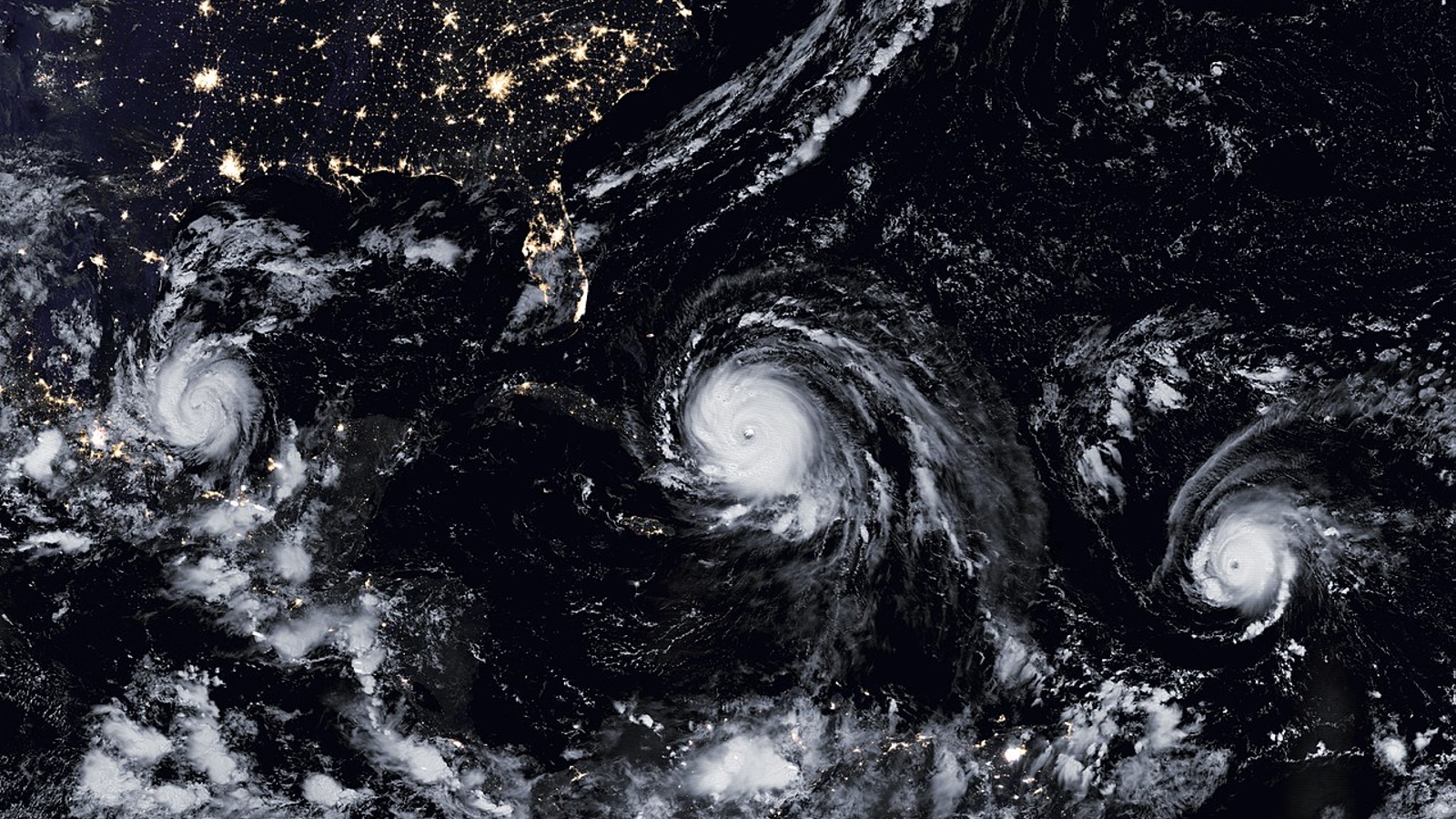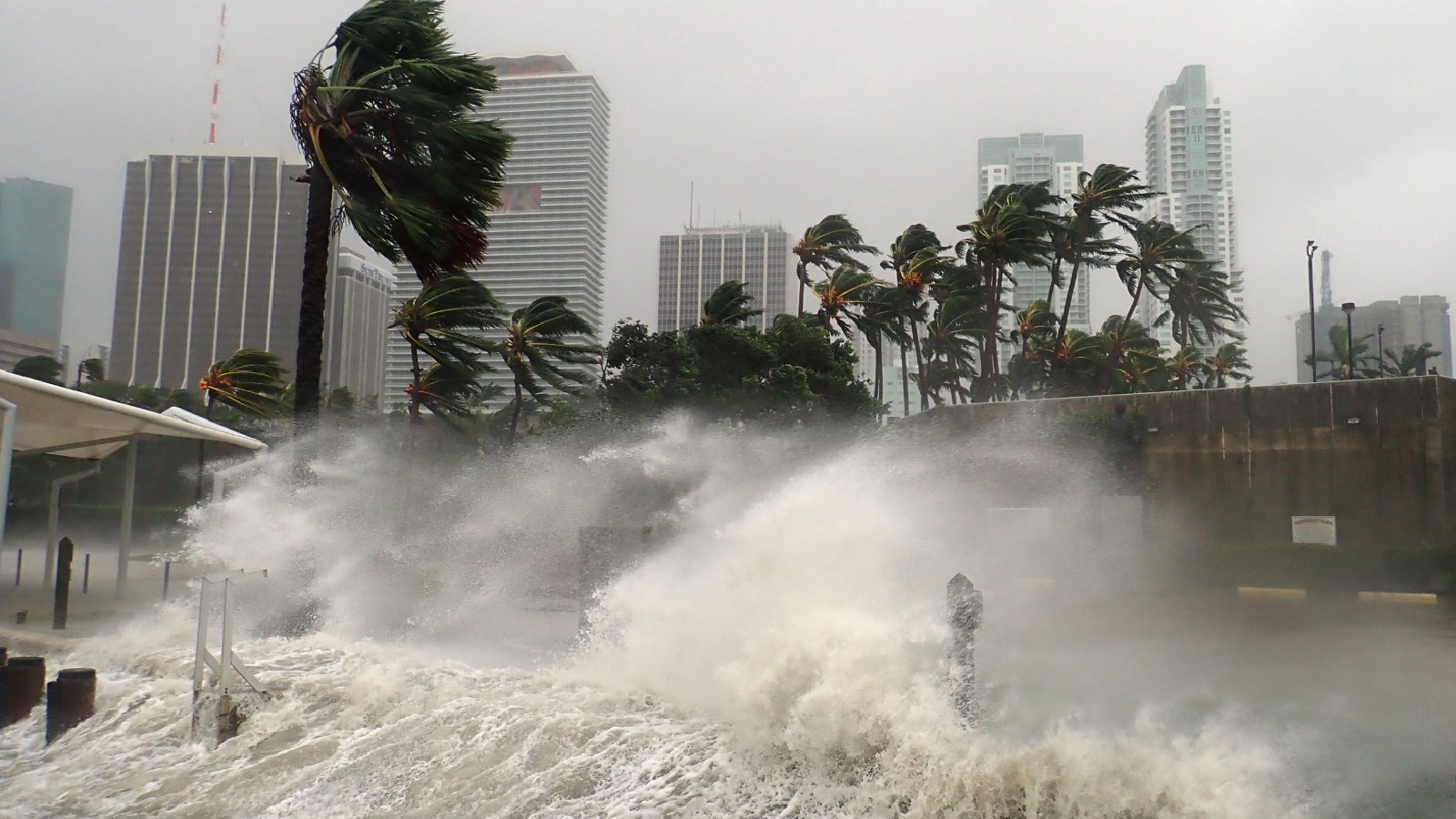
Where is it? North Atlantic Ocean.
What's in the photo? Hurricanes Katia, Irma and Jose in a near-perfect line.
Which satellite took the photo? Suomi National Polar-orbiting Partnership (Suomi NPP).
When was it taken? September 8, 2017.
In this 2017 satellite photo, a trio of hurricanes — including one of the most powerful tropical storms of the last decade — formed a near-perfect line as they marched through "hurricane alley." Some of the swirling storms, which initially appear to be in the wrong order, later made landfall in the U.S. and Mexico.
The three hurricanes — Katia (left), Irma (center) and Jose (right) — were spotted by the Suomi NPP weather satellite, which is co-run by NASA and the National Oceanic and Atmospheric Administration (NOAA). While they appear to be following one another, the storms are each traveling in a different direction: Katia made landfall in Mexico on Sept. 9; Irma struck Florida on Sept. 10; and Jose eventually dissipated off the New England coast on Sept. 22.
Most Atlantic hurricanes form in the same expanse of water between Northwest Africa and the Gulf of Mexico, dubbed hurricane alley. However, it's rare to see so many of them so close together — and forming such a regimented line, according to NASA's Earth Observatory.
Major Atlantic storms are named alphabetically based on the order they appear in each year's hurricane season. So it might seem strange that Katia is in front of both Irma and Jose in the queue to make landfall.
However, the storms did not form in the order they appear in the image. Irma formed first, on Aug. 30 near Africa's Cape Verde islands. Jose appeared next on Sept. 5 in the mid-Atlantic, not far from where it is in the photo. Katia also formed on Sept. 5, slightly after Jose, but was birthed in Mexico's Bay of Campeche, which is why it is closest to land in the photo.
Related: 12 amazing images of Earth from space

Hurricane Irma was the most destructive of the three storms. This powerful Category 5 storm triggered storm surges up to 8 feet (2.5 meters) high, unleashing as much as 20 inches (50 centimeters) of rain in certain areas and spawning at least five separate tornadoes, according to the National Weather Center. One person was killed directly by its winds, which reached a maximum speed of 130 mph (210 km/h), while up to 33 people were killed indirectly by the storm.
At the time, it was reported that Hurricane Irma had the greatest accumulated cyclone energy (ACE) — the total amount of wind energy generated throughout the life of a tropical cyclone — of any tropical storm on global record, according to NASA's Earth Observatory. However, calculations later downgraded its power.
The all-time ACE record was recently broken in 2023 by Cyclone Freddy, which appeared in the Indian Ocean and made landfall three separate times, decimating parts of Madagascar and Mozambique.
Research has shown that rising ocean temperatures triggered by human-caused climate change have likely made hurricanes more powerful on average. Some experts believe we may have to create a new sixth hurricane category to keep track of future storms.
The upcoming 2024 season is expected to be particularly active, with up to 25 named storms predicted, due to record-breaking surface temperatures caused by the recent El Niño event. This year's season has already started with a bang thanks to Hurricane Beryl, which formed earlier in the year than any other Category 5 hurricane on record.







